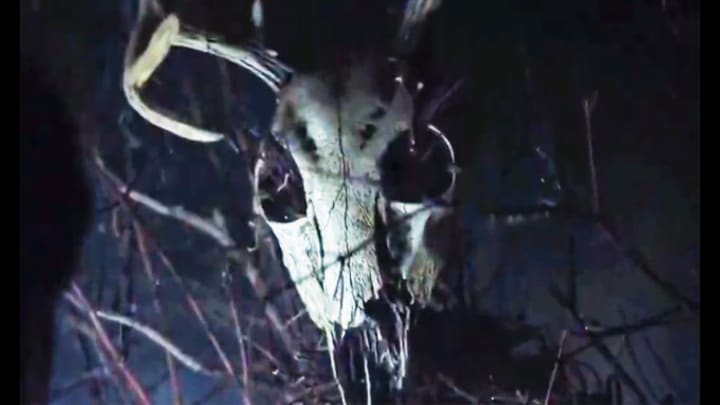Establishing the Corkscrew: Visual Film-making in 'The Wretched'
How can a split second visual break the fourth wall and ruin the tension of a movie?

In the new horror movie, The Wretched, there is a scene in which directors, Brett and Drew Pierce, have a scene featuring a corkscrew. This corkscrew will have no significance in the long run. Our antagonist, that we will simply refer to as ‘Wretched,’ has taken the form of one of our protagonists. Wretched is using this female form to deceive another character and enact an enchantment upon them.

To hold the attention of the character being deceived, we will call him Dad, he’s father of the film’s main character, Wretched grabs a bottle of wine and asks Dad to open it for her. He complies with her but he’s eager to get going, his son has just been arrested and may be on a drug induced, violent rampage, he’s not in a vino mood. Dad acquiesces and retrieves the corkscrew of the title of this article.

Here, the film pauses for several seconds to linger upon the corkscrew. The corkscrew gleams with menace. The sharp end of the corkscrew reflects the light of the room, calling attention to its sharpness. Dad is impatient, he leaves the corkscrew on the table next to the wine and goes to leave. Wretched gets up from the table to stop him from going. She quite curiously asks this man, who is her boyfriend, I should note, to stay instead of going to be with his son.

She leaps up and embraces him and engages in a vigorous kiss. In this moment, the establishing of the corkscrew, Wretched’s urgent attempt to keep dad from leaving, these things coalesce to create a frightening tension. We, the audience, can quite reasonably assume that the directors have established the corkscrew in order to use the sharp end as a weapon to wound or kill Dad.

That doesn’t happen. However, the movie is far from over. Dad and Wretched have another scene coming up. Wretched has reason to believe that Dad may have discovered her existence. Wretched now needs to kill dad in order to keep him from exposing her as a child eating Witch. She has Dad in a compromised position, she’s snuck up behind him and she can enact her will upon him and preserve her anonymity.
Wretched stabs dad with a kitchen knife.
This, dear reader, is a lesson in poor visual film-making. When a filmmaker establishes a scene on the visual plane they can choose what is important and what is not important. It doesn’t matter what kind of chair Wretched is sitting in, the filmmakers don’t take time to show us the legs of the chair, the curve and contour of the leg of the chair or a loose nail that could be shaken loose and used as a weapon.

No, the filmmakers visually establish the corkscrew. The camera lingers on it. For the filmmakers and the film editor, this is a transition moment. They are establishing new eye-lines and a new setting, a dining room, that we’ve not seen from this perspective before. They have a reason for the cutting to the corkscrew from a technical standpoint. But in making this choice, they accidentally or incidentally established the corkscrew.

Intentionally or not, the filmmakers gave weight and importance to the corkscrew. They established the corkscrew. They distracted us as an audience. They’ve created in us an expectation that this sharp object in proximity to a murderous and violent antagonist is about to be used as a weapon. Not using the corkscrew after establishing the corkscrew is bad visual film-making. It’s sloppy.

There is a concept in drama that you may be familiar with called “Chekhov’s Gun.” It’s a dramatic rule that breaks down like this: If a gun is established in the first act, the gun must go off by the third act. If you establish that a character has a gun and you visually demonstrate that to the audience, you create the reasonable expectation that this gun is important and will be put to use as part of the story being told.

By establishing the corkscrew, the directors of The Wretched created a reasonable expectation that the corkscrew would be used. In the tension of the scene, a murderous witch and an intended victim, we expect a violent end. The pointy end of the corkscrew gleams, the camera lingers. The corkscrew is a weapon at that moment. Not using it as such calls attention to the mechanics of film-making. It breaks the fourth wall and reminds the audience that we are watching a movie and not being absorbed into a story.
The Wretched is available on most streaming platforms on May 1st.
About the Creator
Sean Patrick
Hello, my name is Sean Patrick He/Him, and I am a film critic and podcast host for the I Hate Critics Movie Review Podcast I am a voting member of the Critics Choice Association, the group behind the annual Critics Choice Awards.






Comments
There are no comments for this story
Be the first to respond and start the conversation.